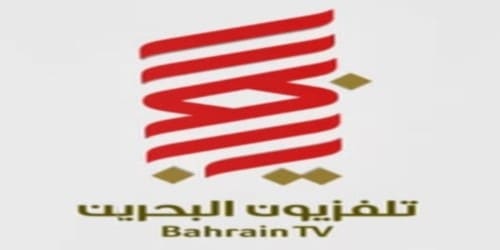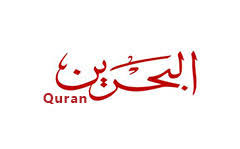Al Aoula Maroc Latest Satellite Frequencies and Tuning Guide

Al Aoula, also known as the First Channel or Al Aoula Inter, is Morocco’s premier public television channel, launched in 1962 under the Société Nationale de Radiodiffusion et de Télévision (SNRT).
Renowned for its diverse programming, Al Aoula delivers a captivating mix of news, cultural shows, sports, dramas, and social discussions, catering to Moroccans and the Arab diaspora.
As a free-to-air channel broadcasting in Arabic and French, it reflects Morocco’s rich heritage and contemporary issues.
This guide provides the latest frequencies for Al Aoula on satellites as of June 2025, a clear receiver setup process, expert reception tips, and a peek into its engaging content, ensuring viewers can tune in effortlessly from Rabat to Paris.
Why Al Aoula Stands Out
Al Aoula is a cultural and informational cornerstone, offering content that resonates with diverse audiences. From breaking news on Moroccan and global events to popular dramas like Marrakech Express and live sports coverage, including Moroccan football, the channel appeals to all ages. Its free-to-air status ensures accessibility, with HD broadcasts enhancing the viewing experience.
Al Aoula also streams live on www.snrtlive.ma and engages viewers through social media on YouTube and Facebook, making it a vital link for the Moroccan diaspora.
Whether you’re seeking cultural documentaries or Ramadan specials, Al Aoula delivers quality and variety.
Al Aoula Satellite Frequencies
To watch Al Aoula, you need accurate frequency, polarization, symbol rate, and FEC (Forward Error Correction) settings for your satellite receiver.
The table below lists the latest frequencies for Al Aoula on key satellites as of June 2025, sourced from reliable platforms like www.snrtlive.ma, www.lyngsat.com, and www.altkia.com. As a free-to-air channel, no decryption is required. Always verify frequencies with these sources, as transponder settings may change.
|
Satellite |
Frequency |
Polarization |
Symbol Rate |
FEC |
Coverage |
Details |
|---|---|---|---|---|---|---|
|
Nilesat 201/Eutelsat 7 West A (7.0° W) |
12207 MHz |
Vertical (V) |
27500 kS/s |
3/4 |
Middle East, North Africa |
SD/HD, DVB-S2, strong signal in Morocco, Algeria, Tunisia. |
|
Hot Bird 13E (13.0° E) |
10873 MHz |
Vertical (V) |
27500 kS/s |
3/4 |
Europe, parts of North Africa |
SD, DVB-S, ideal for Moroccan diaspora in France, Italy. |
|
Badr 4 (26.0° E) |
12683 MHz |
Vertical (V) |
27500 kS/s |
3/4 |
Middle East, North Africa |
SD, DVB-S, reliable in Morocco, Egypt, Saudi Arabia. |
|
Eutelsat 21B (21.6° E) |
11567 MHz |
Horizontal (H) |
30000 kS/s |
2/3 |
Middle East, North Africa |
HD, DVB-S2, strong in Morocco, Libya, Jordan. |
Key Information
-
Satellite Coverage: Al Aoula is available on Nilesat, Hot Bird, Badr 4, and Eutelsat 21B. No confirmed frequencies exist for Yahsat (52.5° East) or Es’hailSat (25.5° East) as of June 2025.
-
Frequency Accuracy: Avoid outdated frequencies like 11564 MHz (Vertical) on Nilesat, which may no longer be active for Al Aoula. The table above provides the most reliable settings.
-
Global Access: Signals may weaken outside MENA and Europe, such as in Asia or the Americas. Stream live on www.snrtlive.ma or YouTube for worldwide viewing.
-
Free-to-Air Status: Al Aoula is unencrypted, requiring no subscription, ensuring accessibility within satellite footprints.
Tips for Optimal Reception
To enjoy Al Aoula’s programs with clear quality, follow these expert tips for satellite reception:
-
Dish Size: Use a 60-80 cm dish for Nilesat, Hot Bird, and Badr 4 in MENA and Europe (e.g., Rabat, Casablanca, Paris). For Eutelsat 21B, a 70-90 cm dish is recommended. In fringe areas (e.g., northern Europe for Nilesat), a 90-120 cm dish enhances signal strength.
-
Precise Dish Alignment: Point your dish to Nilesat (7.0° W), Hot Bird (13.0° E), Badr 4 (26.0° E), or Eutelsat 21B (21.6° E) using a satellite finder or app like DishPointer or SatFinder. Ensure no obstructions block the signal.
-
LNB Selection: Install a Universal Ku-band LNB with 9.75 GHz (low band) and 10.6 GHz (high band) frequencies. Ensure DVB-S2 compatibility for HD broadcasts on Nilesat and Eutelsat 21B.
-
Signal Quality: Aim for 70% or higher signal quality (98% is optimal) on your receiver’s signal meter to avoid pixelation. Adjust LNB skew for peak performance.
-
Weather Protection: Ku-band signals may weaken during heavy rain. Secure your dish and check LNB caps for water damage to maintain signal stability.
-
Coverage Check: Confirm your location is within the satellite’s beam using coverage maps on www.dishpointer.com or www.satbeams.com.
Tuning Al Aoula on Your Receiver
Adding Al Aoula to your satellite receiver is straightforward with these steps, compatible with most receivers (e.g., Strong, Humax, Technisat), though menu labels may vary slightly.
-
Open the Menu:
-
Press “Menu” or “Settings” on your remote.
-
Navigate to “Installation,” “Channel Search,” or “Antenna Setup.”
-
-
Select Manual Scan:
-
Choose “Manual Scan,” “Manual Installation,” or “Add Transponder.”
-
Select “Add TP” or “Edit Transponder” if prompted.
-
-
Choose the Satellite:
-
Select Nilesat (7.0° W), Hot Bird 13E (13.0° E), Badr 4 (26.0° E), or Eutelsat 21B (21.6° E) from the satellite list.
-
If not listed, manually enter the orbital position.
-
-
Enter Transponder Settings:
-
Refer to the frequency table above and input the settings for your chosen satellite (e.g., 12207 MHz, Vertical, 27500 kS/s, 3/4 for Nilesat).
-
Double-check entries for accuracy.
-
-
Run the Scan:
-
Press “Scan,” “Search,” or “OK” to start the scan.
-
Select “FTA Only” or “All Channels” to include free-to-air channels.
-
Wait 1-3 minutes for the scan to complete.
-
-
Save Channels:
-
Press “Save” or “OK” to store the scanned channels.
-
Al Aoula will appear as “Al Aoula,” “Al Aoula Inter,” or “Al Aoula HD” in your channel list.
-
-
Adjust if Needed:
-
If the signal is weak or the channel is missing, tweak the dish’s azimuth and elevation while monitoring the signal meter.
-
Check LNB skew and cables for 70-98% signal strength.
-
-
Test the Broadcast:
-
Locate Al Aoula in your channel list and select it to confirm clear playback.
-
If issues persist, recheck settings or consult a professional installer.
-
Receiver Tips:
-
For Strong receivers (e.g., SRT 4950), enable “LNB Power” in the “Transponder” menu.
-
For Humax or Technisat, set LNB to “Universal” (9750/10600 MHz).
-
Default PINs (e.g., 0000, 1234) may be required; check your manual.
Al Aoula’s Engaging Programming
Al Aoula offers a diverse lineup that blends information, entertainment, and culture, appealing to a wide audience. Key highlights include:
Top Programs
-
Marrakech Express: A popular Moroccan drama series exploring family and societal themes.
-
Mubarakia: A talk show addressing social issues and community stories.
-
Sports Coverage: Live broadcasts of Moroccan football, including Botola Pro and national team matches.
-
Cultural Documentaries: Programs showcasing Morocco’s history, art, and traditions.
-
News Bulletins: Daily updates on Moroccan and international news in Arabic and French.
Content Categories
-
News: Comprehensive coverage of political, economic, and social developments.
-
Sports: Live football matches and sports analysis, especially during major tournaments.
-
Entertainment: Moroccan and Arab dramas, comedies, and variety shows.
-
Cultural: Documentaries and shows celebrating Moroccan heritage and arts.
-
Social: Talk shows addressing community issues and fostering dialogue.








